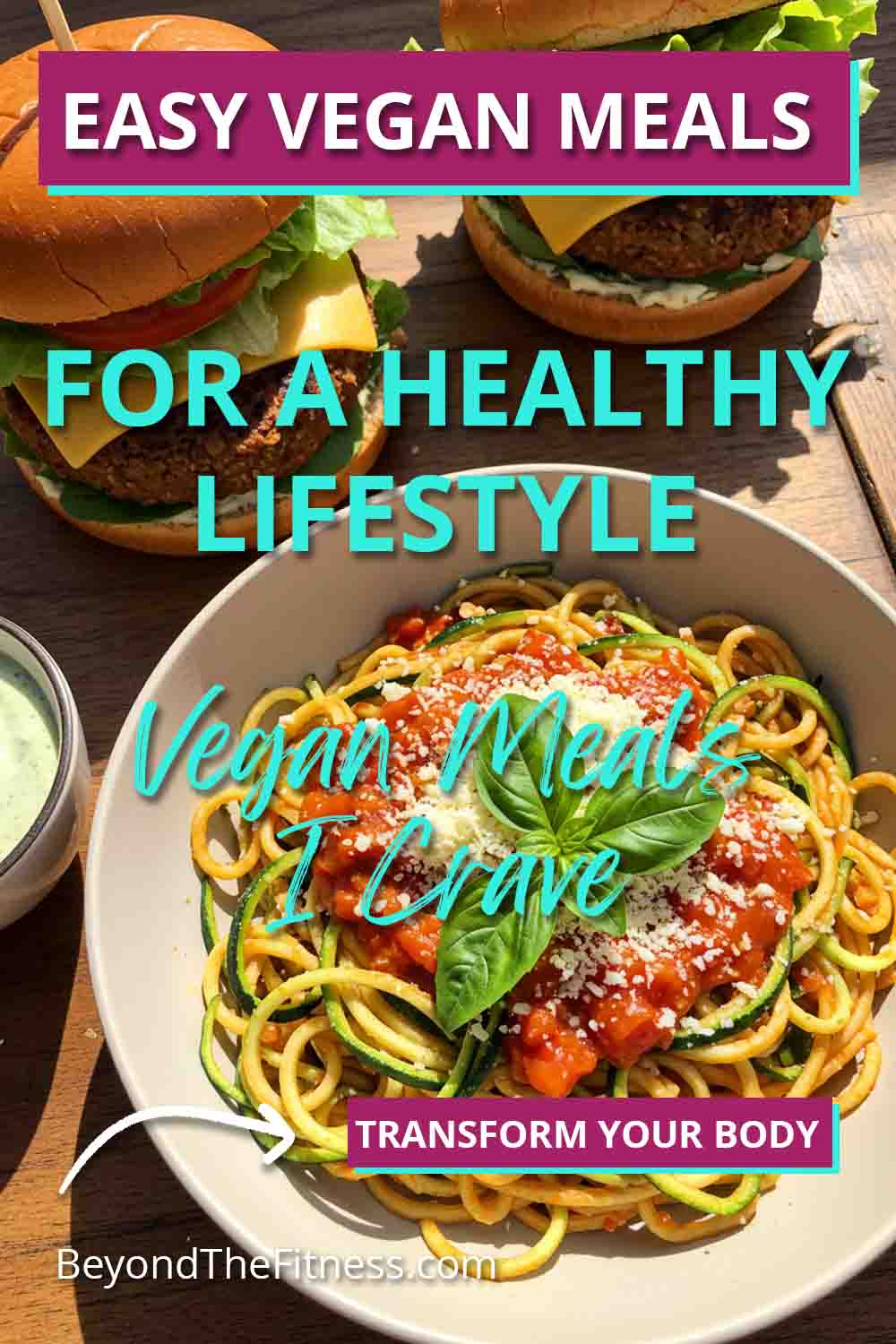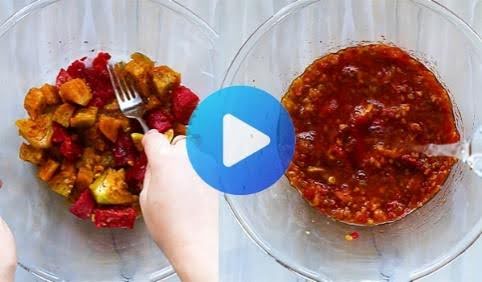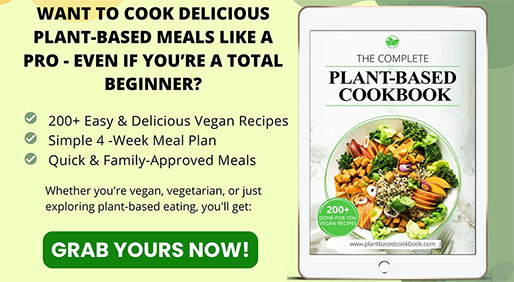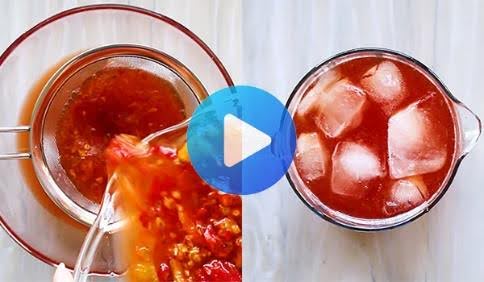Embarking on a vegan journey can feel like a big step. I know many women wonder if they can truly thrive, stay healthy, and manage their weight without animal products. Let me assure you, it’s absolutely possible and can be incredibly rewarding. A well-planned vegan diet is packed with nutrients, fiber, and goodness that can support your health goals, including weight management and fitness performance. It’s not about restriction; it’s about abundance and discovering a whole new world of delicious foods.
My goal here is to guide you through creating a vegan meal plan that works for you. This isn’t just a list of foods; it’s about understanding the principles behind healthy vegan eating so you can build sustainable habits for life. We will explore everything from essential nutrients to meal ideas and how to fuel your body for exercise.
What Does Eating Vegan Mean?
First things first, let’s clarify what a vegan diet involves. Simply put, vegans do not eat any animal products. This includes:
Insider Tip: Enjoying Healthy and Flavorful Plant-Based Dishes with The Complete Plant Based Recipe Cookbook
- Meat (beef, pork, lamb, etc.)
- Poultry (chicken, turkey, duck, etc.)
- Fish and seafood
- Dairy products (milk, cheese, yogurt, butter)
- Eggs
- Honey (produced by bees)
Instead, a vegan diet centers around plants: fruits, vegetables, grains, legumes (beans, lentils, peas), nuts, and seeds. It might sound limiting at first, but the variety within the plant kingdom is vast and exciting.
Why Consider a Vegan Lifestyle? Health and Weight Benefits
People choose veganism for many reasons, including ethics, environmental concerns, and health. From my perspective as a fitness and nutrition consultant, the health benefits are compelling, especially for women looking to improve their well-being and manage their weight.
- Weight Management: Plant-based diets are often lower in calories and saturated fat compared to diets high in animal products. They are typically very high in fiber. Fiber is amazing because it helps you feel full and satisfied after meals, which can naturally lead to eating fewer calories without feeling deprived. Studies show that people following vegan diets tend to have lower body mass indexes (BMIs).
- Heart Health: Vegan diets eliminate dietary cholesterol (only found in animal products) and are generally low in saturated fat. They are rich in heart-healthy unsaturated fats, fiber, and antioxidants. This combination can help lower bad cholesterol levels, reduce blood pressure, and decrease the risk of heart disease.
- Blood Sugar Control: The high fiber content in whole plant foods helps slow down sugar absorption into the bloodstream. This can improve insulin sensitivity and help manage or even prevent type 2 diabetes.
- Gut Health: Fiber is crucial for feeding the good bacteria in your gut. A healthy gut microbiome is linked to better digestion, a stronger immune system, and even improved mood. Vegan diets are naturally rich in the fiber these beneficial microbes love.
- Reduced Inflammation: Chronic inflammation is linked to many diseases. Plant foods are packed with anti-inflammatory compounds like antioxidants and phytonutrients, which can help calm inflammation in the body.
It is important to remember that just because something is labeled “vegan” doesn’t automatically make it healthy. Vegan cookies, chips, and processed meals can still be high in sugar, unhealthy fats, and sodium. The real benefits come from focusing on whole, unprocessed plant foods.
Essential Nutrients on a Vegan Diet: What to Watch
When you remove entire food groups, you need to be mindful about getting certain nutrients. This isn’t difficult on a vegan diet, but it does require some planning. Let’s look at the key players:
Protein: Building Blocks for Your Body
Protein is vital for building and repairing tissues, making enzymes and hormones, and supporting immune function. Many people worry about getting enough protein without meat or dairy, but plants offer plenty of great sources.
- Why it matters for women: Protein helps maintain muscle mass, which is important for metabolism and strength. It also contributes to satiety, helping with weight management.
- Good Vegan Sources:
- Legumes: Lentils, chickpeas, black beans, kidney beans, pinto beans, peas, edamame (soybeans), tofu, tempeh. Lentil soup, bean burritos, hummus, and tofu scrambles are great ways to include these.
- Nuts and Seeds: Almonds, walnuts, cashews, chia seeds, flaxseeds, hemp seeds, pumpkin seeds, sunflower seeds. Add them to oatmeal, salads, smoothies, or eat them as snacks. Nut butters are also excellent.
- Whole Grains: Quinoa, oats, brown rice, whole wheat bread, amaranth, buckwheat. Quinoa is a standout as it contains all essential amino acids.
- Vegetables: While generally lower in protein than legumes or nuts, some vegetables like broccoli, spinach, potatoes, and Brussels sprouts contribute to your daily intake.
- Seitan: Made from wheat gluten, seitan is very high in protein and has a meaty texture.
- Nutritional Yeast: Often used for its cheesy flavor, it also provides a good protein boost.
Aim to include a good protein source at each meal.
Iron: Energizing Your Body
Iron is crucial for making hemoglobin, the protein in red blood cells that carries oxygen throughout your body. Iron deficiency (anemia) can lead to fatigue, weakness, and difficulty concentrating – things no one wants.
- Why it matters for women: Women, especially during their reproductive years, have higher iron needs due to menstrual losses. Getting enough iron is key for energy levels.
- Plant Iron (Non-Heme): Plants contain non-heme iron, which isn’t absorbed as easily as heme iron (from animal sources). But you can boost absorption significantly.
- Boosting Absorption: Pair iron-rich foods with sources of Vitamin C (like citrus fruits, bell peppers, strawberries, broccoli). Cooking in cast iron pans can also add a bit of iron to your food. Avoid drinking coffee or tea with iron-rich meals, as tannins can hinder absorption.
- Good Vegan Sources:
- Lentils and beans
- Tofu and tempeh
- Spinach (cooked is better for absorption)
- Fortified cereals and breads
- Quinoa
- Pumpkin seeds
- Dried apricots and raisins
- Blackstrap molasses
Vitamin B12: Nerve and Blood Health
Vitamin B12 is essential for nerve function and the formation of red blood cells. It’s primarily found in animal products, so this is one nutrient vegans must pay attention to. Deficiency can lead to serious neurological problems.
- Why it matters: B12 deficiency can cause fatigue, nerve damage, and anemia. The effects can be irreversible if not addressed.
- Vegan Sources: Vitamin B12 is made by microorganisms. While some plant foods like certain mushrooms or algae might contain traces, these are not considered reliable sources.
- The Solution: The most reliable way for vegans to get B12 is through:
- Fortified Foods: Many plant milks (soy, almond, oat), breakfast cereals, nutritional yeast, and some meat substitutes are fortified with B12. Check labels carefully.
- Supplements: Taking a regular B12 supplement (cyanocobalamin is a common, effective form) is highly recommended for all vegans to ensure adequate intake. It’s easy, safe, and ensures you’re covered.
Don’t skip on B12; supplementation or consistent intake of fortified foods is non-negotiable.
Calcium: Strong Bones and More
Calcium is famous for bone health, but it also plays roles in muscle function, nerve signaling, and blood clotting.
- Why it matters for women: Maintaining bone density is crucial throughout life, especially post-menopause when estrogen levels drop, increasing osteoporosis risk.
- Good Vegan Sources:
- Fortified Plant Milks and Yogurts: Check labels, as fortification levels vary.
- Fortified Orange Juice
- Tofu (made with calcium sulfate): Check the ingredients list.
- Leafy Greens: Collard greens, kale, bok choy, turnip greens (Spinach contains calcium, but also oxalates which reduce absorption).
- Broccoli
- Almonds and almond butter
- Sesame seeds and tahini
- Dried figs
- Beans (white beans, kidney beans)
Ensure you’re also getting enough Vitamin D, which helps your body absorb calcium.
Vitamin D: The Sunshine Vitamin (and Calcium’s Helper)
Vitamin D works hand-in-hand with calcium for bone health. It also plays roles in immune function and mood regulation. Our bodies can make Vitamin D from sunlight exposure, but many people (vegan or not) don’t get enough, especially in colder climates like Toronto or during winter months.
- Why it matters: Essential for calcium absorption, bone health, and immune support.
- Vegan Sources:
- Sunlight: Aim for safe sun exposure (e.g., 15-20 minutes on arms and legs a few times a week during peak sun hours, without sunscreen – but be mindful of skin cancer risk). This is harder in winter or northern latitudes.
- Fortified Foods: Many plant milks, some cereals, orange juice, and margarines are fortified with Vitamin D. Look for Vitamin D2 (ergocalciferol) or vegan Vitamin D3 (lichen-derived cholecalciferol).
- Mushrooms (exposed to UV light): Some mushrooms are treated with UV light to boost their Vitamin D content. Check packaging.
- Supplements: A Vitamin D supplement is often recommended, especially during fall and winter or if you have limited sun exposure. Choose a vegan D2 or D3 form.
Omega-3 Fatty Acids: Brain and Heart Health
Omega-3s are healthy fats important for brain function, heart health, and reducing inflammation. The main types are ALA, EPA, and DHA.
- Why it matters: EPA and DHA, in particular, are crucial for brain health and cardiovascular protection.
- Vegan Sources:
- ALA (Alpha-Linolenic Acid): Found in flaxseeds (ground is best), chia seeds, hemp seeds, walnuts, and canola oil. Your body can convert some ALA into EPA and DHA, but the conversion rate can be low and inefficient.
- EPA/DHA: Getting pre-formed EPA and DHA directly is more reliable. While fatty fish is the main source in non-vegan diets, vegans can get it from:
- Algal Oil Supplements: Derived from algae (where fish get their omega-3s), these supplements provide a direct, vegan source of EPA and DHA. This is often recommended.
Include sources of ALA daily (like adding flax or chia to smoothies or oatmeal) and consider an algal oil supplement for direct EPA/DHA.
Building Your Vegan Meal Plan: A Day in the Life
Okay, let’s put this knowledge into practice. Planning doesn’t have to be rigid, but having a basic structure helps ensure you’re meeting your nutritional needs and staying satisfied. Think in terms of meal components: Protein + Whole Grain/Starchy Vegetable + Healthy Fat + Fruits/Veggies.
Awesome Vegan Breakfasts
Start your day strong with a balanced breakfast.
- Oatmeal Power Bowl: Cook rolled oats with plant milk. Top with berries (Vitamin C), chia seeds or ground flaxseed (Omega-3s, fiber), chopped nuts or nut butter (protein, fat), and maybe a sprinkle of cinnamon.
- Tofu Scramble: Crumble firm tofu and sauté it with onions, peppers, spinach, and turmeric (for color). Add nutritional yeast for a cheesy flavor (B12 if fortified). Serve with whole-wheat toast and avocado.
- Smoothie: Blend plant milk, a scoop of vegan protein powder (optional), spinach or kale, a banana or other fruit, and a tablespoon of almond butter or hemp seeds.
- Whole-Grain Pancakes/Waffles: Use a vegan recipe (flax egg often works) and top with fruit and maple syrup (in moderation) or nut butter.
- Avocado Toast: Mash avocado on whole-grain toast. Sprinkle with hemp seeds or red pepper flakes. Add sliced tomatoes or greens.
- Fortified Cereal: Choose a high-fiber, low-sugar cereal fortified with B12 and iron. Serve with fortified plant milk and fruit.
Satisfying Vegan Lunches
Lunch should refuel you for the afternoon. Leftovers from dinner are always a great option.
- Lentil Soup: Hearty, filling, and packed with protein and iron. Serve with whole-grain bread.
- Large Salad with Legumes: Start with mixed greens. Add chickpeas or black beans (protein), quinoa (protein, carbs), chopped veggies (peppers, cucumber, carrots), sunflower seeds (fat), and a vinaigrette dressing (use olive oil or tahini-based).
- Hummus and Veggie Wrap: Spread hummus on a whole-wheat tortilla. Fill with grated carrots, cucumber sticks, bell peppers, spinach, and maybe some baked falafel or tofu strips.
- Veggie Burger: Choose a patty made from beans, lentils, or vegetables (check sodium levels). Serve on a whole-wheat bun with lettuce, tomato, onion, and avocado.
- Quinoa Bowl: Combine cooked quinoa with roasted sweet potatoes, black beans, corn, salsa, and avocado.
- Peanut Butter Sandwich (Upgraded): Use whole-grain bread, natural peanut butter, and add sliced banana or apple instead of jelly.
Delicious Vegan Dinners
Dinner can be a time to explore different flavors and cuisines.
- Stir-Fry: Sauté tofu, tempeh, or edamame with lots of colorful vegetables (broccoli, bell peppers, snow peas, carrots) in a light soy-ginger sauce. Serve over brown rice or quinoa.
- Bean Chili: A classic comfort food. Use kidney beans, black beans, pinto beans, tomatoes, onions, peppers, and spices. Top with avocado or vegan sour cream.
- Pasta with Lentil Bolognese: Make a rich sauce using lentils instead of meat, tomatoes, herbs, and vegetables. Serve over whole-wheat pasta.
- Curry: Coconut milk-based curries with chickpeas, lentils, potatoes, spinach, or cauliflower are delicious and easy. Serve with brown rice.
- Baked Sweet Potatoes: Stuff baked sweet potatoes with black beans, corn, salsa, and nutritional yeast.
- Veggie Tacos/Burrito Bowls: Use seasoned lentils or crumbled tempeh as the “meat.” Load up with lettuce, tomatoes, onions, salsa, guacamole, and brown rice or quinoa.
Healthy Vegan Snacks
Snacks help bridge the gap between meals and keep energy levels stable.
- Fruit (apple, banana, orange, berries)
- A handful of nuts or seeds (almonds, walnuts, pumpkin seeds)
- Vegetables with hummus (carrots, celery, bell peppers)
- Rice cakes with avocado or nut butter
- A small bowl of edamame (steamed)
- Vegan yogurt (fortified) with berries
- A small smoothie
- Roasted chickpeas
Sample 7-Day Vegan Meal Plan Outline
This is just a template to give you ideas. Feel free to mix and match based on your preferences and what’s available. Remember to drink plenty of water throughout the day.
- Day 1:
- Breakfast: Oatmeal Power Bowl
- Lunch: Leftover Lentil Soup from a previous batch or a large salad with chickpeas.
- Dinner: Tofu Stir-fry with Brown Rice
- Snack: Apple slices with almond butter
- Day 2:
- Breakfast: Tofu Scramble with Whole-Wheat Toast
- Lunch: Hummus and Veggie Wrap
- Dinner: Bean Chili with a side salad
- Snack: Handful of walnuts and raisins
- Day 3:
- Breakfast: Smoothie with spinach, banana, plant milk, and chia seeds.
- Lunch: Leftover Bean Chili
- Dinner: Pasta with Lentil Bolognese
- Snack: Vegan yogurt with berries
- Day 4:
- Breakfast: Fortified Cereal with Plant Milk and Berries
- Lunch: Quinoa Bowl with Black Beans and Roasted Veggies
- Dinner: Chickpea Curry with Brown Rice
- Snack: Orange and a few almonds
- Day 5:
- Breakfast: Avocado Toast with Hemp Seeds
- Lunch: Leftover Chickpea Curry
- Dinner: Veggie Burgers on Whole-Wheat Buns with Sweet Potato Fries (baked)
- Snack: Rice cakes with peanut butter
- Day 6:
- Breakfast: Whole-Grain Pancakes with Fruit
- Lunch: Large Salad with baked tofu or tempeh
- Dinner: Baked Sweet Potatoes stuffed with black beans and corn salsa.
- Snack: Edamame (steamed)
- Day 7:
- Breakfast: Leftover Tofu Scramble or Oatmeal
- Lunch: Leftover Stuffed Sweet Potatoes
- Dinner: Veggie Tacos with all the fixings (lentil filling, lettuce, tomato, avocado)
- Snack: Banana
Eating Out and Social Situations
Eating vegan outside your home is easier than ever.
- Plan Ahead: Look at menus online before you go. Many restaurants label vegan options or have sections dedicated to them.
- Ethnic Cuisines: Indian, Thai, Ethiopian, Mexican, and Italian restaurants often have naturally vegan dishes or options that can be easily modified (ask for no cheese or butter).
- Communicate Clearly: Don’t be afraid to ask questions about ingredients or request modifications (e.g., “Can you make this without cheese?” or “Is the soup made with vegetable broth?”).
- Simple Swaps: Ask for oil and vinegar instead of creamy dressings, request steamed veggies instead of buttered ones, or swap fries for a side salad.
- Bring a Dish: If going to a potluck or party, bring a delicious vegan dish you know you can enjoy and share.
Fueling Your Fitness: Veganism and Exercise
You can absolutely be strong, fit, and athletic on a vegan diet. It just requires smart planning, like any diet.
- Pre-Workout: Focus on easily digestible carbohydrates for energy about 1-2 hours before exercise. Good options include a banana, a small bowl of oatmeal, or toast with jam. Avoid high-fat or high-fiber foods right before a workout, as they can cause digestive discomfort.
- During Workout (if long/intense): For exercise lasting over an hour, you might need carbs. Sports drinks, gels, or easily digestible fruits like bananas can work. Water is crucial for hydration.
- Post-Workout Recovery: Aim for a combination of protein and carbohydrates within about 30-60 minutes after finishing your workout. This helps repair muscle tissue and replenish glycogen stores.
- Good Options: A smoothie with plant milk, vegan protein powder, and fruit; tofu scramble with veggies; lentil soup; chocolate soy milk; beans and rice.
- Overall Protein Intake: Active individuals, especially those doing strength training, have higher protein needs. Ensure you’re consistently including protein-rich foods throughout the day, not just post-workout. Aiming for sources at each meal and snack helps.
- Listen to Your Body: Pay attention to your energy levels and recovery. If you feel consistently fatigued, review your diet to ensure you’re getting enough calories and key nutrients like iron and B12.
Making the Transition Smoothly
Switching to a vegan diet doesn’t have to be overnight.
- Start Small: Try Meatless Mondays or swap one meal a day to be fully vegan.
- Veganize Familiar Meals: Make chili with beans instead of beef, use lentils in shepherd’s pie, or make stir-fries with tofu instead of chicken.
- Explore New Foods: Visit a health food store or the international aisle of your supermarket. Try tempeh, nutritional yeast, different types of beans, or grains like quinoa and farro.
- Find Vegan Alternatives: Explore plant-based milks, yogurts, cheeses, and butter to find ones you enjoy.
- Focus on Addition, Not Subtraction: Think about all the delicious plant foods you can eat, rather than focusing on what you’re cutting out.
- Be Patient: It takes time to adjust habits and find your groove. Don’t strive for perfection, just progress.
Whole Foods vs. Processed Vegan Foods
As mentioned earlier, “vegan” doesn’t always equal “healthy.” Many processed vegan products (mock meats, cheeses, frozen meals, snacks) can be high in sodium, unhealthy fats, and additives, while lacking the fiber and micronutrients of whole foods.
While these convenience foods can be helpful during transition or occasionally, base your diet primarily on:
- Fruits
- Vegetables (lots of variety and color)
- Whole Grains (oats, quinoa, brown rice, whole wheat)
- Legumes (beans, lentils, peas, tofu, tempeh)
- Nuts and Seeds
These foods provide the fiber, vitamins, minerals, and phytonutrients that offer the most significant health benefits.
You Might Be Interested In: Exploring Delicious Vegan Recipes With This Cookbook
Don’t Forget Hydration
Water is essential for everything your body does, from digestion to temperature regulation to nutrient transport. Aim to drink water consistently throughout the day. Herbal teas also count towards your fluid intake. Carry a reusable water bottle as a reminder.
Building a healthy vegan lifestyle is a journey of discovery. It’s about nourishing your body with vibrant, plant-based foods that support your well-being, energy levels, and fitness goals. By focusing on whole foods and paying attention to key nutrients, you can create a delicious and sustainable way of eating that benefits both you and the planet.
Related YouTube Video
Final Thoughts
Creating your ultimate vegan meal plan is personal. It involves listening to your body, understanding nutritional needs, and finding foods you genuinely enjoy. Remember that consistency and focusing on whole, unprocessed foods are key. It’s not about perfection but about making conscious choices most of the time to support your health and vitality. Embrace the variety and flavors the plant kingdom offers. You have the power to build a healthy, energetic life through mindful eating.







